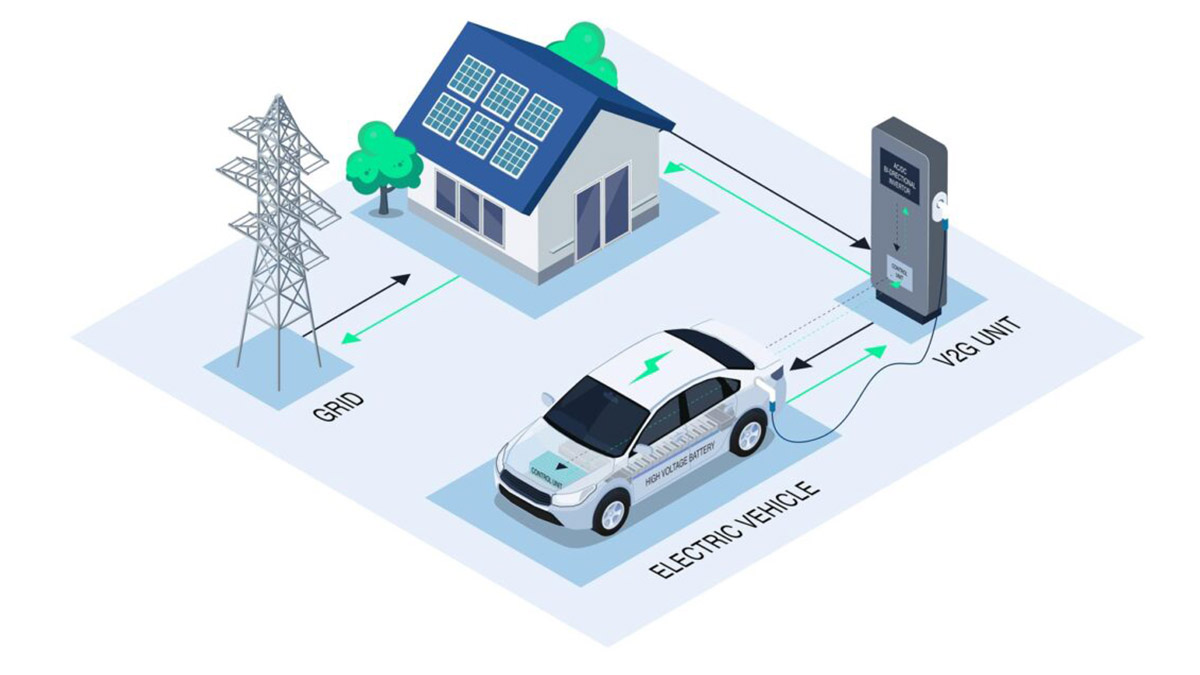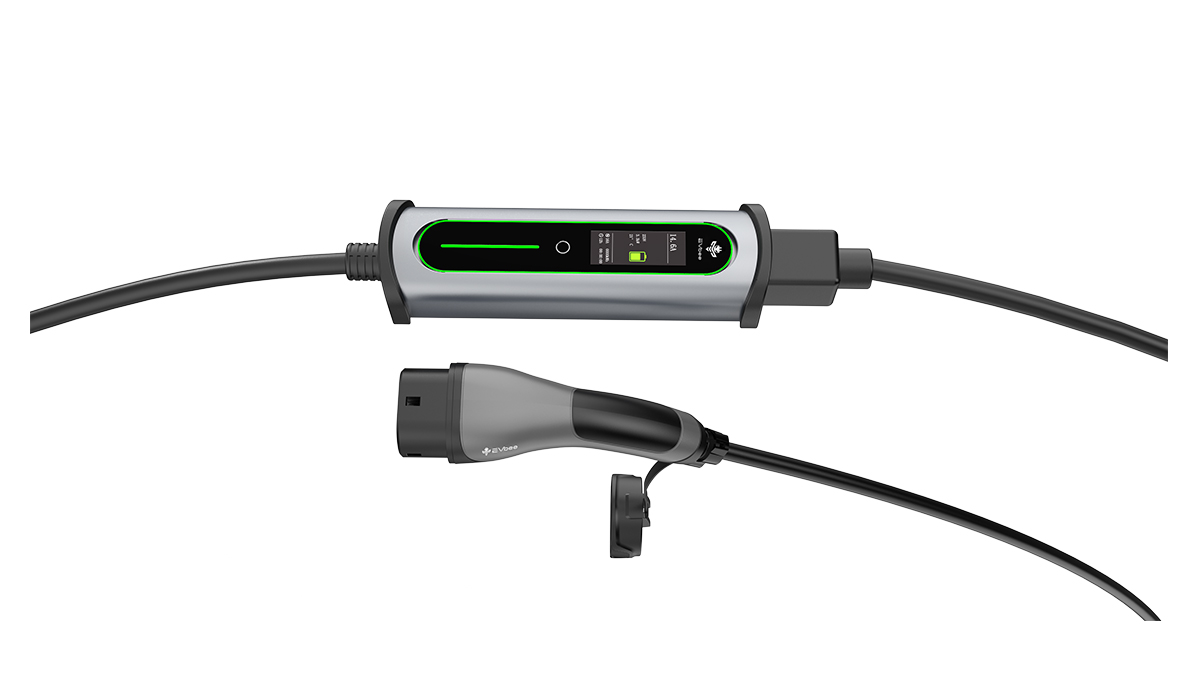 V2X Basics: How EVs Can Power Homes, Buildings and the Grid
V2X Basics: How EVs Can Power Homes, Buildings and the Grid
Sep 29, 2025
V2X means an EV is more than a device that takes power. It can also share energy with your home, your building, or the wider grid. This guide keeps the scope tight: what each option does, who benefits, and what you need to make it work—without turning it into a white paper.
V2X Glossary: Quick Definitions
G2V (Grid-to-Vehicle)Plain one-way charging. Focus is on safe, reliable energy flow from grid to car; “smart” behavior comes from the charger or cloud.
V1G (Smart one-way charging)Shifts time/power of charging based on tariff, solar output, or utility signals. Easiest win for homes, fleets, and public sites to cut costs and peaks.
V2L (Vehicle-to-Load)Your EV acts like a portable power source for tools, laptops, or camping gear. Minimal setup; limited power/time, but great convenience.
V2H (Vehicle-to-Home)Feeds a home during outages or expensive peak hours. Needs a bidirectional charger plus transfer/anti-islanding gear. Best where TOU price spread or outage risk is high.
V2B (Vehicle-to-Building)Supports a commercial site to shave brief peaks and lower demand charges. Usually DC bidirectional chargers tied to a building EMS; requires interconnection review in many regions.
V2C (Vehicle-to-Community)Several EVs support a campus or neighborhood microgrid. Value comes from local resilience and shared assets; governance and metering matter.
V2G (Vehicle-to-Grid)Aggregates many vehicles to export power or adjust load for grid services (frequency, capacity, demand response). Needs programs, metering, and an aggregator; fleets and campuses benefit most.
VPP (Virtual Power Plant)Software that groups EVs (and other DERs) into one dispatchable resource. Think “coordination + bidding” layer on top of V1G/V2G.
DR (Demand Response)Programs that pay sites to shift when/how much they charge. Often the first step before full V2G participation.
DERMS (Distributed Energy Resource Management System)The control room for many small assets—coordinates EVs, solar, storage with site or utility objectives.
VGI / GIV (Vehicle-Grid Integration)Umbrella term for tech, rules, and markets that let vehicles interact with the grid—covers everything from V1G to V2G/VPP.
Where each option fits
Use case
What it does
Typical hardware
Complexity
Who benefits most
V1G
Schedules/ramps charging to cut cost and grid stress
Smart AC/DC charger
Low
Homes, fleets, public sites
V2L
Powers devices directly from the car
Built-in outlet + cable
Low
Camping, field work
V2H
Backs up the home; shifts energy from cheap to expensive hours
Bidirectional charger + transfer/islanding switch
Medium
Homes with TOU rates or outage risk
V2B
Clips building peaks; lowers demand charges
Bidirectional DC charger + building EMS
Medium–High
Stores, warehouses, offices
V2G
Aggregated grid services; potential new revenue
Bidirectional chargers + aggregator platform
High
Fleets, campuses, communities
What you need for bidirectional modes
Vehicle capability. Not every model supports V2L/V2H/V2G. Confirm the function and the allowed power levels.
Compatible charger.• AC path(vehicle has onboard bidirectional inverter):simple for homes; usually lower power.
• DC path(bidirectional power stage inside the charger):common for commercial and fleet; easier to aggregate.
Safe switching and protection. V2H/V2B require a transfer switch and anti-islanding so a home or site doesn’t back-feed utility lines during an outage.
Rules and contracts. V2G participation depends on local programs; buildings may need interconnection review and metering changes.
Operating limits. Set an SOC floor(for example 30–40%)and time windows so mobility stays first.
How value usually shows up• V1G is the quickest win: shift charging to cheaper hours, avoid unnecessary peaks, keep batteries cooler.• V2H adds resilience and some savings when the peak/off-peak spread is large. Value climbs if outages are common.• V2B targets demand charges and brief peaks. Even modest power for a short window can trim monthly bills.• V2G can pay, but it depends on program rules and participation rate. Start small, verify response, then scale.
Small engineering notes that matter in the fieldContact quality and temperature control dominate at higher power. Tiny changes in contact resistance create heat, which triggers derating. Cable cross-section and bend radius affect both losses and ergonomics; liquid-cooled cables keep size manageable. Telemetry you can act on—handle and termination temperatures, real-time derating, and clear alarms—turns maintenance from guesswork into a short on-site task.
A simple rollout path
Enable V1G wherever possible and measure one month of savings and peak reduction.
Pilot V2H at one home or V2B at one building; verify the transfer switch and islanding behavior during a controlled test.
For fleets, try V2G with a small group through an approved program; confirm response time, earnings, and driver impact.
Expand only after you have data on SOC limits, temperature behavior, and any maintenance events.
FAQ
1) Will bidirectional use damage my battery?Any cycling adds wear, but strategy matters more than the label. Keep discharge windows shallow, set an SOC floor, and maintain good thermal control. These choices influence aging far more than whether power flows one way or two.
2) If the grid goes down during V2H, will my system back-feed the street?A proper V2H setup uses a transfer switch and anti-islanding. During an outage, your site isolates automatically so energy never flows to utility lines, protecting line workers and keeping your system compliant.
3) I already have rooftop solar or a home battery. Do I still need V2H?It depends on goals. If you want stronger outage coverage or extra peak shifting without buying more stationary storage, V2H can complement solar and a home battery. If your stationary system already covers long outages, V2H becomes optional.
4) For a commercial site, should we jump straight to V2G?Usually not. Start with V1G to cut peaks and organize charging around tariffs. Then add a small V2G pilot to prove response rate, metering, and earnings. Scale when the data is stable.
5) What checks should I run before buying hardware?Confirm vehicle support, charger type(AC or DC bidirectional), required permits, metering and interconnection steps, and on-site safety gear. Ask vendors for allowable temperature rise at the connector and cable, typical service intervals, and the exact steps a field tech follows to replace seals or re-torque terminations.
6) Where do connector details matter most?At high power, heat and uptime are decided at the contact interface and inside the handle. This is why Workersbee prioritizes stable contact pressure, readable temperature sensing, and field-replaceable wear parts—small details that keep bays open and sessions steady.
To explore practical charging solutions beyond V2X concepts, Workersbee provides reliable Portable EV Chargers, durable EV Cables, and advanced EV Connectors designed for everyday use. Stay connected with us as we continue to build smarter, safer, and more flexible EV charging experiences.
Read More

 V2X Basics: How EVs Can Power Homes, Buildings and the Grid
V2X Basics: How EVs Can Power Homes, Buildings and the Grid
 Workersbee Dura Charger: The Ultimate Portable & Multifunctional EV Charging Solution
Workersbee Dura Charger: The Ultimate Portable & Multifunctional EV Charging Solution